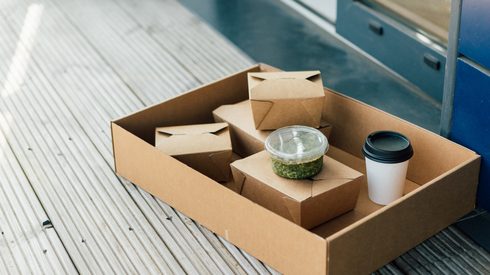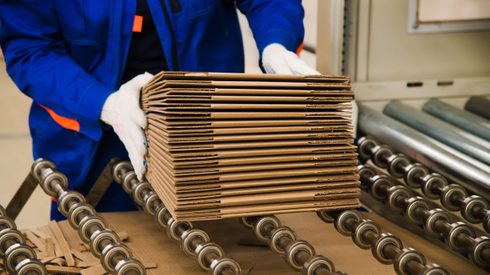WestRock and Graphic Packaging, the two largest boxboard producers in North America, recently participated in the Citi Basic Materials Conference. Leaders at both companies gave an overview of their performance for investors and said that market demand in some subgrades has been growing and could continue to increase in coming years.
WestRock’s consumer packaging backlogs remain strong and plastic replacements are continuing to grow. WestRock CEO David Sewell said that the company was experiencing “a good balance in our food and beverage business as people eat out less but there is a pickup in the grocery stores items as people are eating in.”
Some converting plants in consumer packaging for boxboard are running 24/7 rather than 24/5, Sewell said.
“We are making good progress on lowering our cost basis at our mills,” Sewell said. “We have already lowered it $5/ton and we’ve committed to lowering it $20/ton.”
Also, he said that WestRock’s Evadale, TX, mill can “flex” between SBS (solid bleached sulfate) and CUK (coated unbleached kraft), which allows the company to switch boxboard output to the grade that is in greater demand. “We’re looking to continue to do more of that,” Sewell said.
Graphic Packaging CFO Stephen Scherger said demand remains “very good” for the company’s subgrades: SBS, SUS (solid unbleached sulfate paperboard) and CUK, and CRB (coated recycled boxboard).
“We are really pleased with how CRB has evolved from flat demand environment if you went five to 10 years back to one that has a growth profile. That is one of the reasons we have kept one of our mills open for now – to support the actual demand for some of the [plastic-to-paper] conversions,” Scherger said.
He added that SUS/CUK is a strong global substrate with a highly consolidated market and demand profile. The SUS/CUK market can expect strong and steady growth.
The SBS market has benefited from food service conversions. “Whether it is cups that we make or plates – we don’t make plates, but we produce the paperboard for large plate producers, their demand is very strong,” Scherger said.
Although the material cost to move products has been up, the company has expanded into categories it has historically not actively participated in, Graphic Packaging CEO Mike Doss said.
Looking inside our beverage packaging markets, we’re seeing growth of elimination of plastic rings or resin-based wraps with our fiber-based solutions.
“You look into our food service business, we’re seeing real conversions from foam and plastic cups into our fiber-based solutions. You look at food, we’ve got growth happening on the perimeter of the store with meats, cheeses, fruits, and vegetables that we’ve never participated in. In consumer packaging we’ve got new market opportunities. Our filter frame business continues to grow materially. We’re winning in places like batteries, pet food and detergent—really in categories where historically we didn’t have an active participation strategy,” Doss said.
Graphic Packaging has been growing 3% organically over the last three years. The company’s plastic-to-paper packaging focus has been an important part of the trajectory of the business and the company will focus on earning organically in those categories in coming years, the company leaders said.
This article was first published in PPI Pulp & Paper Week, the industry’s most trusted pulp and paper market news and prices for North America. Speak to our team to find out more and subscribe to our newsletters.







